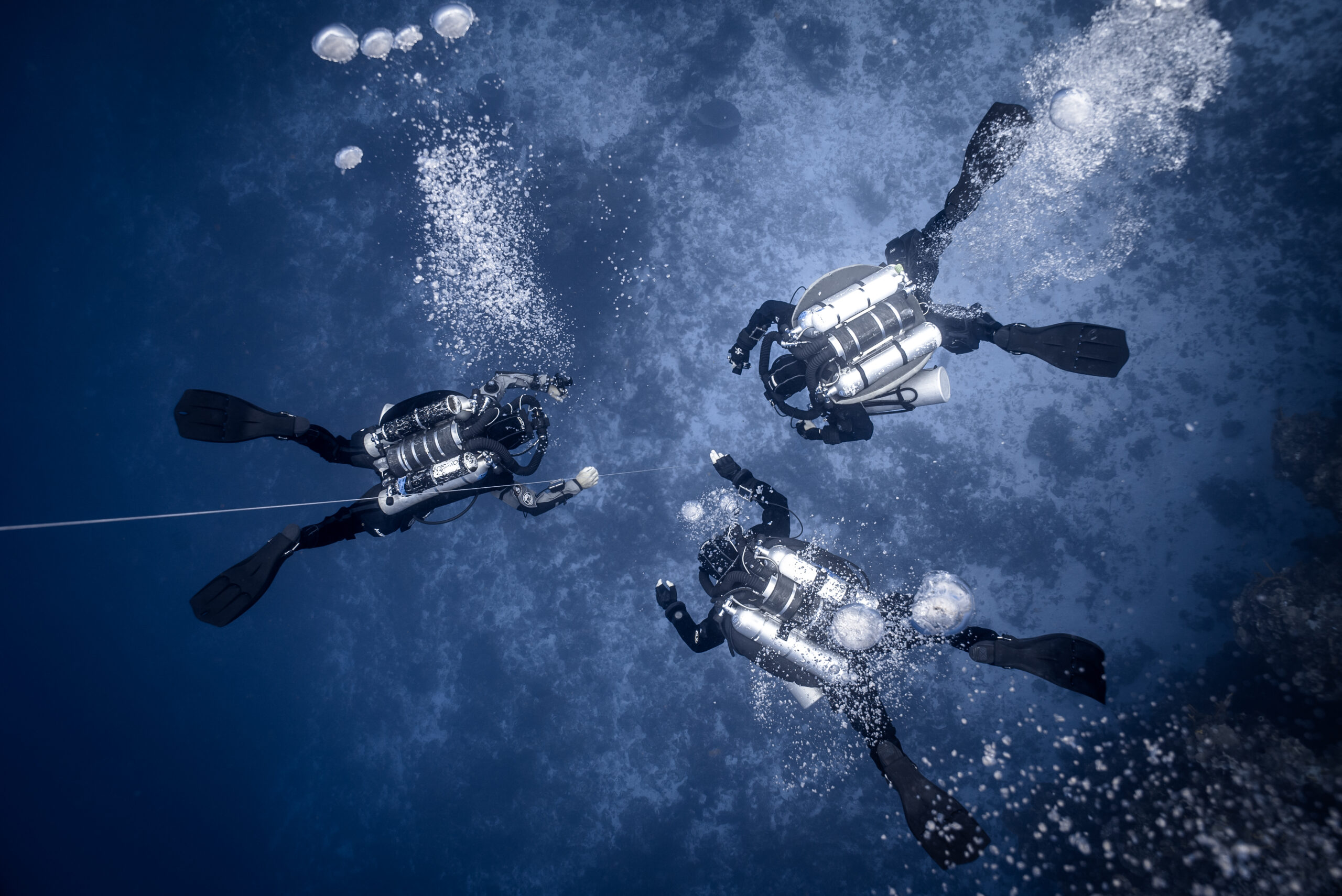Check out the link below and click on Oxygen Addition. Fathom explains needle valve benefits in general:

www.fathomdive.com
The first part pointedly ignores an hCCR, like the rEvo, and only talks about the disadvantages of an eCCR.
Diving a rEvo with a set point set to 0.1 lower than the desired pO2, and flying it manually, is not what I (or most, I think) would call "a lot of work". With a properly set IP on the O2 reg, O2 addition (whether done manually or by the solenoid) is not needed nearly as often as with an eCCR.
The page says right on it "the only real drawback of a CMF system is a depth limitation".
You can adjust your rEvo 1st stage* so that the CMF continues to work in the 100 to 120 meter range. Possibly by using a stiffer spring (in an Apeks 1st stage) to make the IP stable at higher IP settings. Mine is good to 100m as it is, with the stock spring.
The page even says they modify an Apeks DS4 (basically the same thing rEvo used for O2 regs until they changed over to Mares, which come already prepared to accommodate higher IPs) to reach higher IPs for greater depth capability.
So, comparing the Fathom needle valve arrangement to a rEvo CMF:
- they can both be adjusted to work at the same maximum depth.
- the rEvo is not adjustable for O2 flow while in the water.
- the needle is adjustable for O2 flow while in the water.
- the CMF is at higher risk than a needle of being blocked/plugged/clogged.
- the needle has the risk of flowing too much O2 and making the loop hyperoxic.
- the CMF has no risk of being adjusted in the water and making the loop hyperoxic.
- with either one, once you exceed the max depth of the fixed-IP O2 reg, you have to connect another source of O2 and run it manually to maintain your pO2 until you ascend back into the operating range of the O2 reg.
Have I missed anything?
So, the first question I have for you is: Is the maximum depth of your (stock) rEvo and having to run it manually while deeper actually an issue for you?
Is it just me or does it seem kind of ironic that Fathom says the only real drawback of a CMF system is a depth limitation, but the Fathom has exactly the same depth limitation as a rEvo (and uses the same O2 reg as the older rEvos)?
When I have dived deeper than my rEvo's max, connecting offboard O2 and flying it manually was a non-issue for me. At that depth, the pO2 drops very slowly, so manual injection is not required very often at all. And, I have not done and do not anticipate any time soon doing a dive where I remain that deep for more than a few(-ish) minutes. Staying deeper than 350 feet or so for very long is just not on my dance card.
Also, do you feel like your CMF getting or being clogged is something that concerns you? I verify my CMF flow every time I do my build check list. And if it does get partially or completely blocked during a dive, that just means I or my solenoid are injecting O2 more often. I don't see that as any bigger of a risk than my solenoid dying during a dive. I.e. an annoyance, at best. And really, if it's not clogged when I start the dive, what are the chances it will get clogged during the dive? From what? The dirt coming out of my O2 cylinder/reg?
I read about an incident once. I think the diver died. The report I read said that their rebreather had an orifice for flowing O2 and it had (apparently) gotten clogged or blocked by salt crystals. I don't recall that it said specifically what CCR the diver was using, but it seems like it surely could have been a rEvo (and the diver TOTALLY not paying attention to their pO2).
If it was a rEvo and the CMF was blocked by salt crystals, then that is something that happened before the diver got in the water. I.e. salt water got in there on a previous dive and then was allowed to dry and salt crystals to form. And that tells me that (if it was a rEvo) the diver did not perform the steps on their build checklist correctly and verify that their CMF was flowing. But, they died because they didn't monitor their pO2, not because of a blocked CMF.
In other words, I personally do not find a CMF to be dangerous at all. The risk of blockage is very low (with modest maintenance and correct performance of the check list) and the consequences of it happening are very mild.
Lastly, the practical benefit that you have called out is being able to adjust the needle for a higher flow when you are working and then adjust it back down when you are not working. That lets you work while having to manually inject O2 less often than you would with a CMF.
Is that it? That's the one and only practical benefit? And in exchange you adopt a system that adds to your rEvo diving the POTENTIAL to forget to adjust it back down and thereby pump your loop into hyperoxic territory? And you also add the additional task of actually adjusting your flow up and down throughout the course of your dive? Presumably that also means monitoring your pO2 even more closely following an adjustment, to make sure your new setting is "correct"? Your HUD flashes "wrong" and you have to think about and decide whether to manually add O2 or adjust your needle or both?
I like learning new stuff. I appreciate the link to Fathom and getting to read up on the thought process behind that part of the Fathom. Thank you for posting that!
If I am still missing something here, I look forward to your explanation(s)!
* it's not an absolutely simple subject. The diver's metabolic rate is a factor here. Depending on the diver, adjusting for a deeper max depth could require a stiffer spring in the reg and/or a different size orifice in the CMF.





